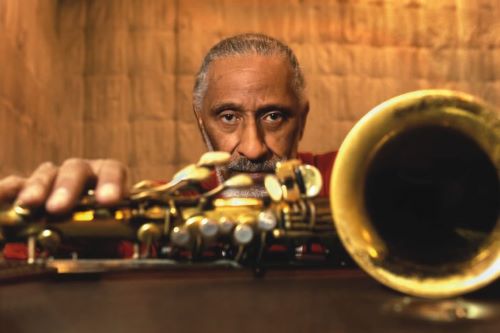Sonny Rollins "The Saxophone Colossus" @ Jazz à Vienne Festival July 2011
Sonny ROLLINS (saxophone)
Peter BERNSTEIN (guitar)
Bob CRANSHAW (bass)
Kobie WATKINS (drums)
Sammy FIGUEROA (percussions)
About The Festival
Since it was created in 1981 under Jean-Paul Boutellier’s leadership, the Jazz à Vienne Festival has been an annual celebration of jazz during the first half of July.
Every year, over 200,000 festivalgoers flock to performances by a thousand musicians on four different stages.
The Théâtre Antique, which was built in the 1st century CE, is Jazz à Vienne’s epicentre. Its unique acoustics and history make it an exceptional venue for both audiences and the internationally renowned musicians who perform there. The festival is a true blend of old and new, an authentic musical fusion. Rich in its diversity, it aims to be a pluralist space that is open to all.
About Sonny Rollins
Sonny Rollins (born Walter Theodore Rollins September 7, 1930) is a towering American jazz tenor saxophonist and composer celebrated for his innovative playing and influential contributions to bebop and post-bop, exemplified by classic albums like Saxophone Colossus and The Bridge. Growing up in Harlem, he was influenced by the Harlem Renaissance and West Indian culture, transitioning from piano to alto and then tenor saxophone in his youth. His storied career includes collaborations with jazz giants like Miles Davis and Thelonious Monk, a battle with addiction, periods of intense self-study, and a career spanning over seven decades, receiving numerous awards and honors.
- Early Life and Musical Beginnings
Born Walter Theodore Rollins on September 7, 1930, in New York City, he grew up in Harlem with parents of Virgin Islands descent.
He started on piano, then switched to alto saxophone at age eight, inspired by Louis Jordan, before switching to tenor saxophone in 1946, influenced by Coleman Hawkins.
- Career Highlights
He began recording and playing with notable jazz figures such as Babs Gonzales, J.J. Johnson, and Miles Davis in the late 1940s and early 1950s.
Rollins' career took off with influential albums such as Saxophone Colossus (1956), Way Out West, and The Bridge (1962), cementing his reputation.
His innovative improvisational style, incorporating unique tonal colors and rhythmic approaches, became a hallmark of modern jazz.
He also incorporated calypso rhythms, famously heard in his iconic song "St. Thomas".
- Challenges and Evolution
Rollins battled heroin addiction in the 1950s, spending time in jail and eventually overcoming the habit.
He took two significant sabbaticals from performing and recording: one in the early 1960s, where he practiced on the Williamsburg Bridge, and another in 1968 to study at an ashram in India.
- Legacy and Recognition
He is widely considered one of the most important and influential tenor saxophonists in jazz history.
His many accolades include the Kennedy Center Honors, the National Medal of Arts, and multiple Grammy Awards.
His extensive career, known for its constant innovation and evolution, ended with his retirement in 2012.
